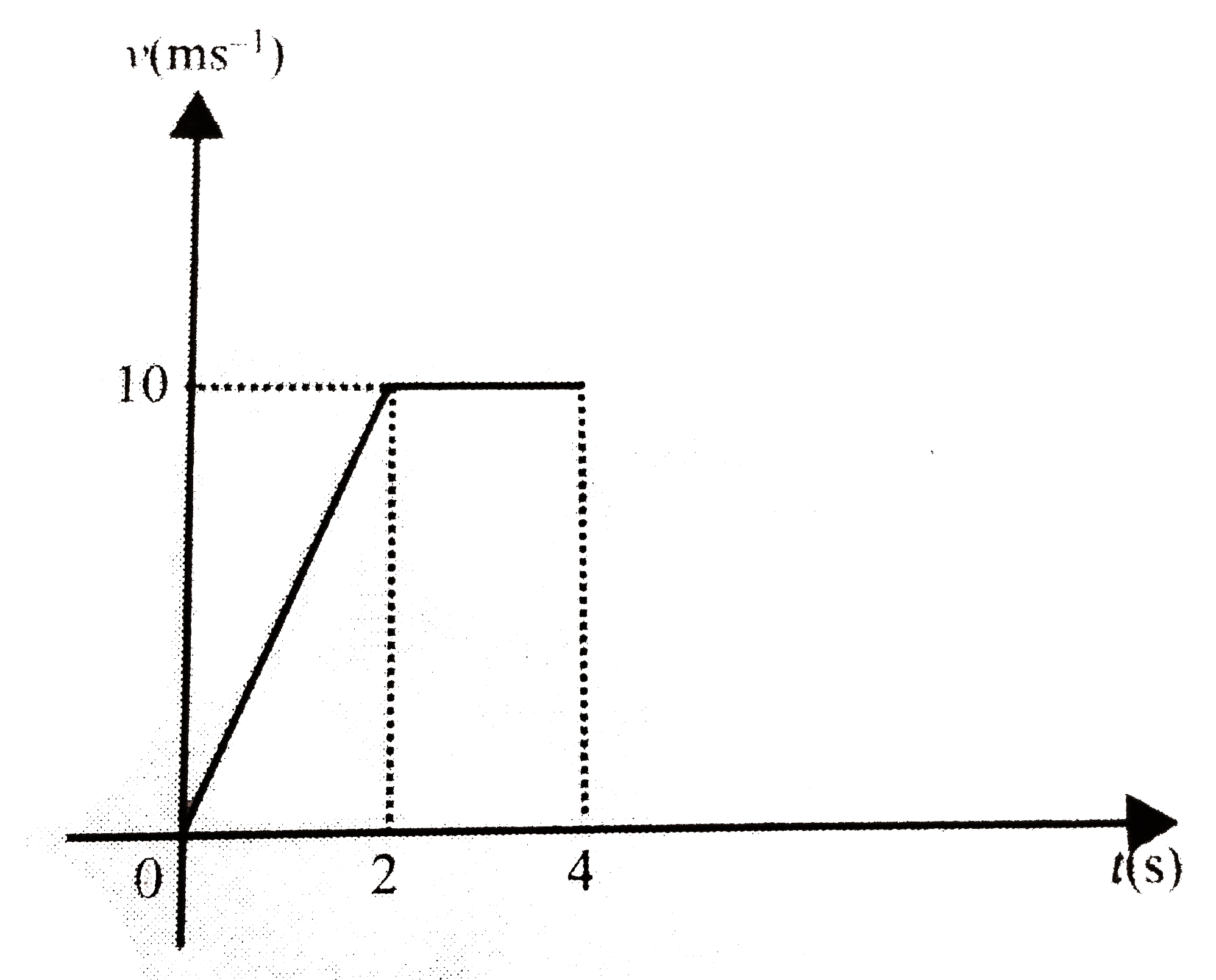A sprinter covers a distance of 2πr while running across joggers track of circumference 44 cm. Find the work done by the sprinter if the distance travelled by him is 1.76×103km
zero J
10J
100J
1000J
The correct Answer is:A
To solve the problem, we need to determine the work done by the sprinter after covering a specified distance on a jogger's track. Here's the step-by-step solution:
Step 1: Understand the given information
- The circumference of the jogger's track is given as 44 cm.
- The distance traveled by the sprinter is given as 1.76×103 km.
Step 2: Convert the distance traveled into centimeters
To find the work done, we first need to convert the distance from kilometers to centimeters:
1 km = 1000 m
1 m = 100 cm
Thus,
1 km=1000×100=100000 cm
Now, converting 1.76×103 km to centimeters:
1.76×103 km=1.76×103×100000 cm=1.76×108 cm
Step 3: Calculate the number of complete laps around the track
Next, we need to find out how many complete laps the sprinter has run. This can be calculated by dividing the total distance traveled by the circumference of the track:
Number of laps=Total distanceCircumference=1.76×108 cm44 cm
Calculating this gives:
Number of laps=1.76×10844=4×106 laps
Step 4: Determine the net displacement
Since the sprinter completes a whole number of laps, the net displacement after running these laps is zero. This is because the sprinter returns to the starting point after each complete lap.
Step 5: Calculate the work done
Work done is defined as:
Work done=Force×Displacement×cos(θ)
In this case, since the net displacement is zero, the work done will also be zero:
Work done=0 joules
Final Answer
Thus, the work done by the sprinter is 0 joules.
---
- The circumference of the jogger's track is given as 44 cm.
- The distance traveled by the sprinter is given as 1.76×103 km.
To find the work done, we first need to convert the distance from kilometers to centimeters:
1 km = 1000 m
1 m = 100 cm
Thus,
1 km=1000×100=100000 cm
Now, converting 1.76×103 km to centimeters:
1.76×103 km=1.76×103×100000 cm=1.76×108 cm
Next, we need to find out how many complete laps the sprinter has run. This can be calculated by dividing the total distance traveled by the circumference of the track:
Number of laps=Total distanceCircumference=1.76×108 cm44 cm
Calculating this gives:
Number of laps=1.76×10844=4×106 laps
Since the sprinter completes a whole number of laps, the net displacement after running these laps is zero. This is because the sprinter returns to the starting point after each complete lap.
Work done is defined as:
Work done=Force×Displacement×cos(θ)
In this case, since the net displacement is zero, the work done will also be zero:
Work done=0 joules
Thus, the work done by the sprinter is 0 joules.
Topper's Solved these Questions
Similar Questions
One end of a fixed spring is pulled by an average force of 10N through a distance of 5cm, find the work done by the spring.
View SolutionThe speed of a car increases uniformly from zero to 10ms−1 in 2s and then remains constant (figure)

a. Find the distance travelled by the car in the first two seconds.
b. Find the distance travelled by the car in the next two seconds.
c. Find the total distance travelled in 4s.
View Solution
Knowledge Check
When a body travels in a circular path and covers a distance equal to 1/4th of its circumference can we conclude that work done is zero?
AyesBnoCboth (a) and (b)Dnone of these
The radii of the wheel of a car is 28 cm. Find the number of rotations made by the wheel in order to cover a distance of 4.4 km ?
View SolutionA man rides a cycle at a speed of 6313km/h. Find the distance travelled in 213 hours.
View SolutionA vehicle covers a distance of 43.2 km in 2.4 litres of petrol. How much distance will it travel in 1 litre of petrol?
View SolutionA car moves at a speed of 5734 km/hr. The car travels for 3 hours 20 minutes. Find the distance covered by the car.
View SolutionA steamer goes downstream from one point to another in 9 hours. He covers the same distance upstream in 10 hours. If the speed of the stream be 1 km/hr, find the speed of the steamer in still water and the distance between the ports.
View SolutionA car travels a distance of 200 km in 3 h. Find the speed of car in ms^(-1)
View SolutionA cyclist travels a distance of 1 km in the first hour, 0.5 km in the second hour and 0.3 km in the third hour. Find the average speed of the cyclist in ms−1 .
View Solution
